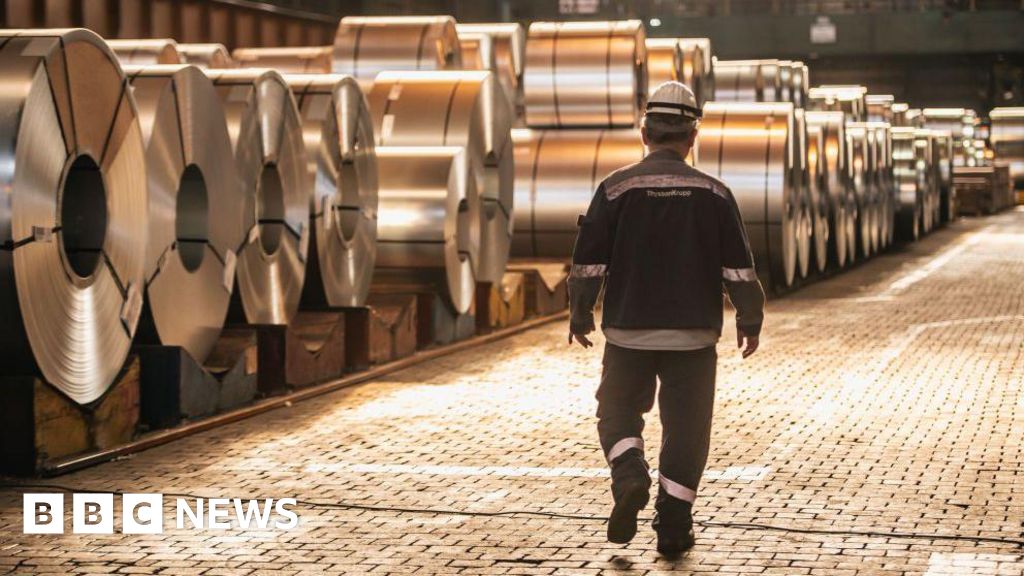The EU’s Strong Reactions to Trump’s Tariff Increase
On a recent Friday, President Donald Trump announced a dramatic hike in tariffs on steel and aluminium imports from 25% to 50%, stirring significant concern across the Atlantic. Speaking at a rally in Pittsburgh—a city emblematic of America’s steel industry—Trump asserted that this bold move would revitalize local manufacturing, strengthen national supply chains, and reduce reliance on imports, particularly from China.
EU’s Response: A Call for Negotiation
The European Commission swiftly responded to Trump’s announcement, expressing profound regret over the tariff increase. In a statement issued to the BBC, the EU’s executive arm emphasized that such a decision complicates ongoing trade negotiations, sowing discord where previously there was hope for resolution. The EU warned that this new tariff regime could lead to "countermeasures," further escalating tensions in transatlantic trade relations.
Implications for Ongoing Trade Talks
The abrupt announcement raises critical questions about the current state of US-EU trade negotiations. Just days prior to Trump’s declaration, discussions were underway to forge a zero-tariff deal on steel and aluminium, a pact that had been agreed upon but not yet signed. The timing of Trump’s decision not only jeopardizes these talks but also introduces significant uncertainty into the broader global economic landscape.
The European Commission reiterated its commitment to resolving the trade spat amicably but made it clear that it stands ready to impose retaliatory measures if necessary. This statement reflects both the seriousness of the situation and the EU’s preparedness to protect its interests.
Trump’s Economic Justification
During the rally, Trump framed the tariff increase as a necessary step to bolster the American steel industry, highlighting a planned $14 billion investment in regional steel production fostered through a partnership between US Steel and Japan’s Nippon Steel. Trump assured the crowd, which consisted mainly of steelworkers, that there would be “no layoffs and no outsourcing whatsoever.” He even promised each US steelworker a bonus of $5,000, a claim that elicited loud applause from his audience.
Despite these assurances, skepticism lingers regarding the actual benefits of such tariffs. The US steel industry has been on a downward trajectory in recent years, with competitors like China, India, and Japan surging ahead. Currently, approximately a quarter of the steel consumed in the US is imported, indicating a heavy dependence on external sources.
The Legal Landscape Around Tariffs
The announcement is further complicated by ongoing legal challenges to Trump’s tariffs. An appeals court recently allowed certain global tariffs to proceed amid legal scrutiny instigated by the Court of International Trade. However, the tariffs on steel and aluminium remain unaffected by these legal disputes, underscoring a complicated and somewhat precarious state of affairs in US trade policy.
Recent Developments and Future Prospects
In the weeks leading up to the tariff hike, Trump had agreed to extend negotiations with the EU on tariffs, pushing deadlines back to allow for further talks. Earlier, he had imposed a 20% tariff on most EU goods, which was later reduced to 10% to facilitate negotiations. His fluctuating stance indicates a tumultuous relationship with trade policy and the complexities that come with it.
At a time when his administration is embroiled in legal battles and facing public scrutiny, this latest tariff announcement is both a tactical maneuver aimed at bolstering domestic industries and a potential flashpoint for escalating international tensions.
The Bigger Picture
The EU’s foreseeable countermeasures and Trump’s aggressive trade strategies contribute to an increasingly intricate web of international trade relationships. This situation not only affects the nations directly involved but also sends ripples through the global economy, altering business dynamics and consumer prices on both sides of the Atlantic. As negotiations continue, the path ahead remains uncertain, with each development promising to impact stakeholders worldwide.


